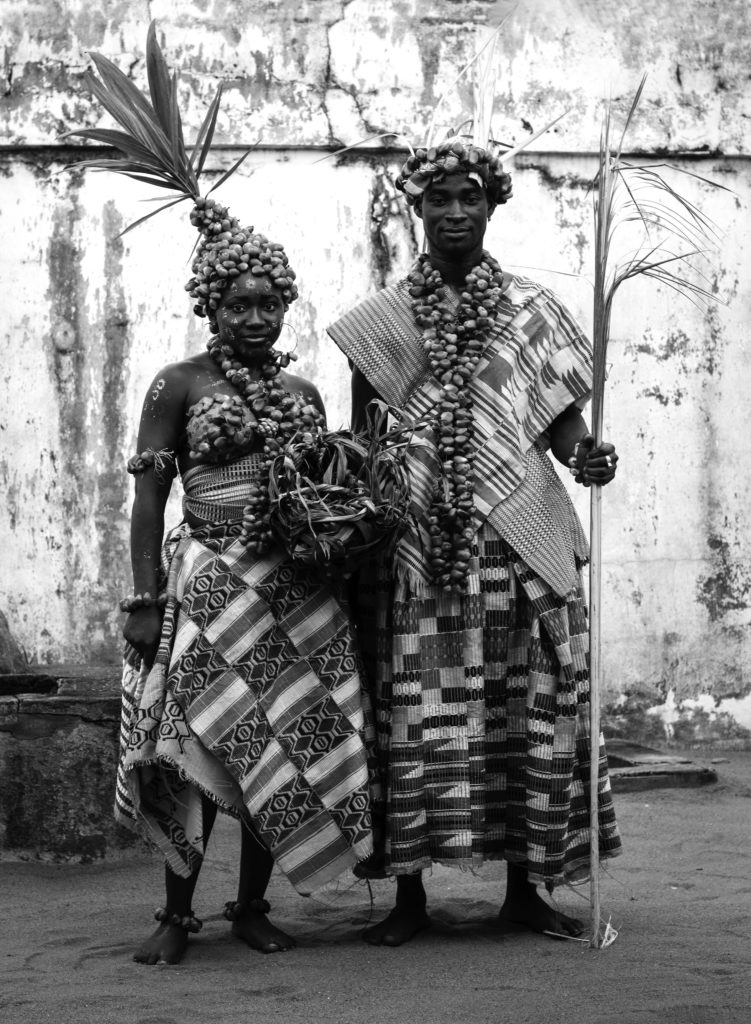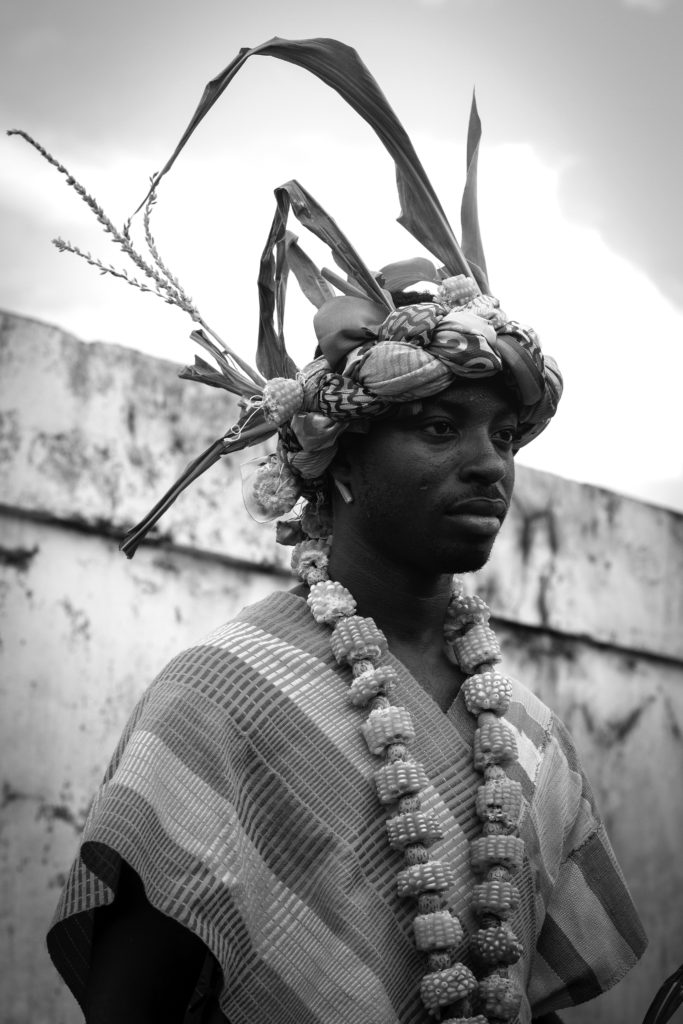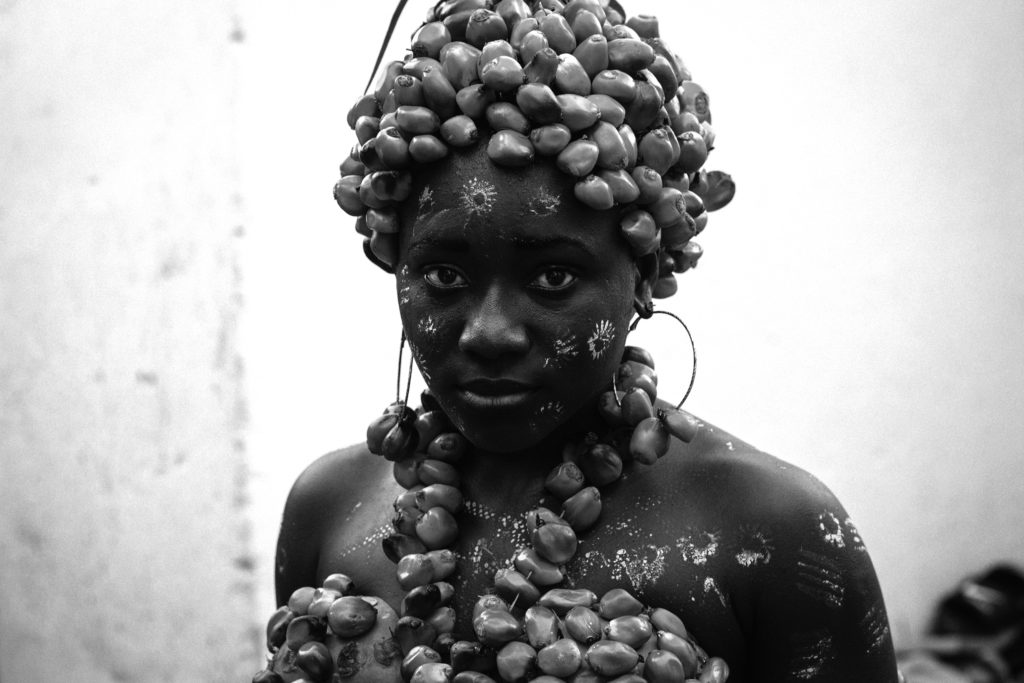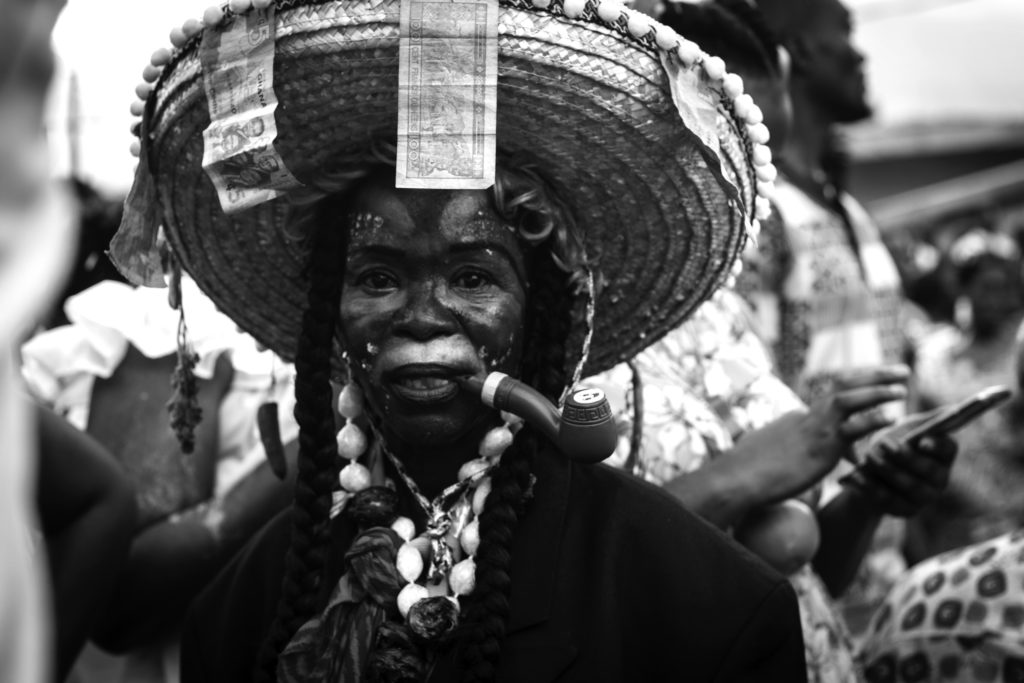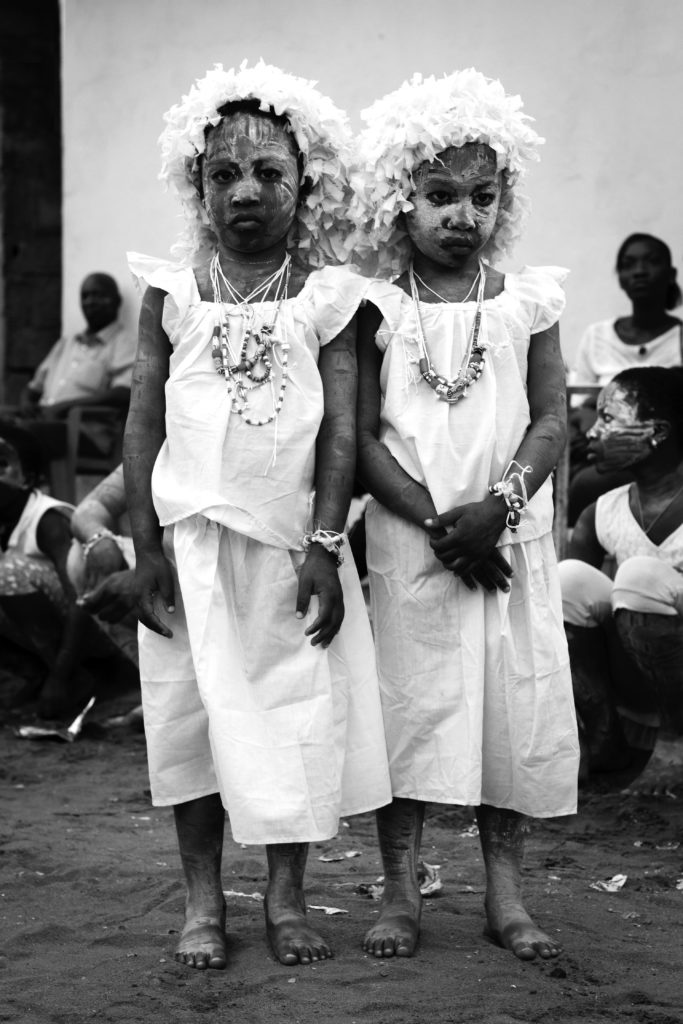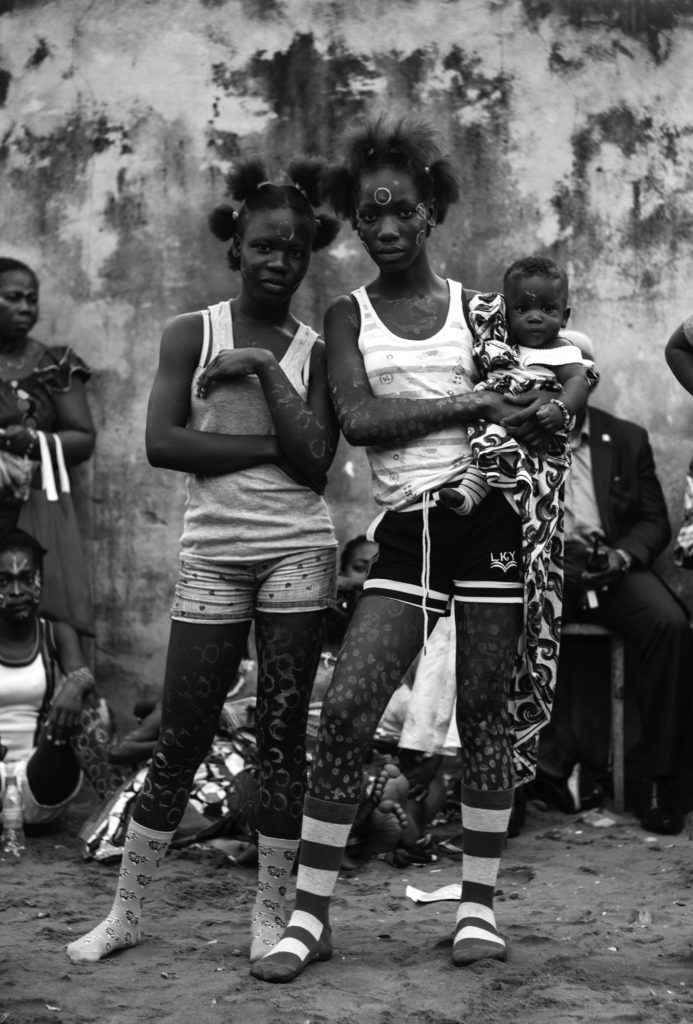Abissa is a tradition of the N’zema people of south-eastern Côte d’Ivoire and south-western Ghana. It comprises an annual fourteen-day festival and is a time of forgiveness and rebirth – a time to let go of all grudges and celebrate the past year through creative traditional wear, dance, music and spirituality.
During the festival, an accusation-repentance ritual is performed during which attendees are expected to ‘come clean’ as they take stock of the past year. Other unique highlights of this celebration are the attendees’ faces decorated with Kaolin, a special type of white clay, and the cross-dressing: men will dress as women, while women will dress as men, as a form of performance to mimic those who have wronged them during the year.
These unlikely, fascinating sights – especially for a West African festival – make this my favourite place to photograph. I photographed this festival in 2016, and again in 2017, and in the future, wish to further explore the stories behind the different people that come to Abissa every year.
Culture, and the preservation of it, is very important for me as a West African visual artist with a focus on illustration and photography. I feel it is vital for African creatives, whether they are living on the African continent or part of the African diaspora, to have a hand in how they wish their country or continent to be represented. I have lived and studied art and design in the UK, Canada and the Ivory Coast, where I live and feel that we are the ones experiencing the various aspects of what it means to be African in the present age. We must show these various facets of what that entails.
